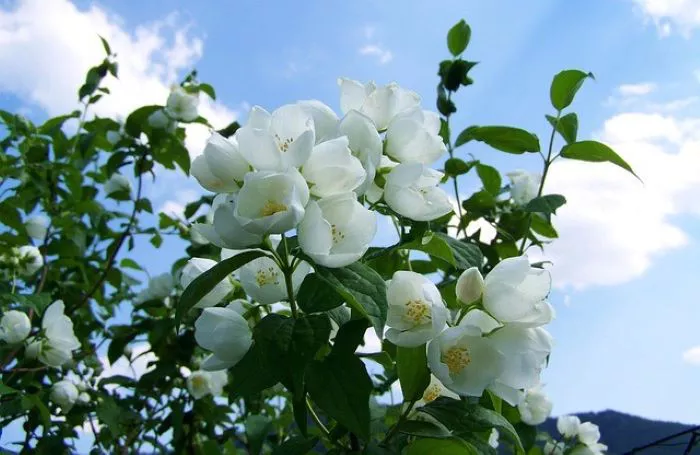Jasmine flowers are celebrated for their captivating fragrance and beauty. These delicate blooms have been cherished in gardens, perfumes, and teas for centuries. However, not all jasmine flowers have the same scent. Different species and varieties of jasmine offer unique aromatic profiles. This article will explore the jasmine flowers that are considered to have the best scents. We will examine their characteristics, uses, and cultivation tips to help you choose the right jasmine for your garden or home.
Understanding Jasmine Varieties
Jasmine belongs to the genus Jasminum, which includes over 200 species. Each species has its own distinct fragrance, appearance, and growing requirements. Some jasmine flowers are known for their strong, sweet aroma, while others have a more subtle scent. The most popular jasmine species include common jasmine, Arabian jasmine, and Italian jasmine. Each of these varieties has unique qualities that contribute to their aromatic appeal.
Common Jasmine (Jasminum officinale)
Common jasmine, also known as poet’s jasmine, is one of the most widely recognized jasmine species. It is native to the Mediterranean region and is known for its sweet, intoxicating fragrance. The flowers are small, white, or pale yellow and bloom in clusters. The scent of common jasmine is often described as rich and floral, making it a favorite in perfumery and aromatherapy.
Common jasmine is highly valued for its essential oil, which is extracted from the flowers. This oil is used in many high-end perfumes due to its captivating aroma. The fragrance is often associated with romance and tranquility, making it a popular choice for special occasions and intimate settings.
Arabian Jasmine (Jasminum sambac)
Arabian jasmine, also known as sambac jasmine, is another highly fragrant variety. It is native to Southeast Asia and is often used in traditional garlands and floral arrangements. The flowers are typically white and have a strong, sweet scent that is more intense than that of common jasmine.
Arabian jasmine is particularly popular in the production of jasmine tea. The flowers are harvested and used to infuse green or white tea leaves, creating a delicate and aromatic beverage. The scent of Arabian jasmine is often described as warm and exotic, making it a favorite in many cultures.
Italian Jasmine (Jasminum humile)
Italian jasmine, or yellow jasmine, is known for its vibrant yellow flowers and sweet fragrance. This species is native to the Mediterranean region and is often used in gardens for its beautiful blooms and pleasant aroma. The scent of Italian jasmine is lighter and more citrusy compared to common and Arabian jasmine.
While Italian jasmine may not be as widely used in perfumery, its fragrance is still delightful. It is often used in landscaping and as a ground cover due to its vigorous growth and attractive flowers. The sweet scent of Italian jasmine can fill a garden with a refreshing aroma, especially during the warmer months.
Jasmine Grandiflorum (Jasminum grandiflorum)
Jasmine grandiflorum, also known as Spanish jasmine or royal jasmine, is renowned for its exquisite fragrance. The flowers are large, white, and have a strong, sweet scent that is often described as creamy and rich. This variety is particularly popular in perfumery and is often used to create high-quality jasmine absolute.
The scent of jasmine grandiflorum is complex and alluring, making it a favorite among fragrance enthusiasts. It is often used in luxurious perfumes and scented products. Additionally, the flowers can be used in traditional medicine and herbal preparations, adding to their appeal.
Factors Influencing Fragrance
The fragrance of jasmine flowers can be influenced by several factors. Environmental conditions, such as temperature, humidity, and soil quality, can impact the scent’s intensity. Jasmine plants that receive adequate sunlight and are grown in well-draining soil tend to produce more fragrant flowers.
The time of day can also affect the fragrance of jasmine. Many jasmine species release their most potent scents in the evening, making them particularly enchanting at night. This nocturnal blooming behavior is often associated with attracting pollinators, such as moths.
Choosing the Right Jasmine for Your Needs
When selecting a jasmine flower for its fragrance, consider your preferences and intended use. If you are looking for a strong and sweet aroma for perfumery or aromatherapy, common jasmine and Arabian jasmine are excellent choices. Their scents are rich and widely appreciated in various applications.
For culinary uses, Arabian jasmine is ideal for making jasmine tea due to its strong flavor and fragrance. If you prefer a lighter scent for landscaping, Italian jasmine may be the right fit. Its vibrant yellow flowers and refreshing aroma can enhance any garden setting.
Cultivating Jasmine for Fragrance
To enjoy the best fragrance from jasmine flowers, proper cultivation is essential. Jasmine plants thrive in warm climates with plenty of sunlight. They prefer well-draining soil rich in organic matter. Regular watering is crucial, as jasmine plants like to stay moist but not waterlogged.
Pruning is also important for maintaining healthy jasmine plants. Regular pruning encourages bushier growth and more abundant flowering. Jasmine can be grown in gardens, containers, or as indoor houseplants, depending on the species.
Conclusion
When it comes to jasmine flowers, the best scent can vary depending on the species and individual preferences. Common jasmine, Arabian jasmine, Italian jasmine, and jasmine grandiflorum all offer unique fragrances that cater to different tastes and uses. Whether you seek a strong aroma for perfumes or a delicate scent for tea, jasmine flowers provide a wealth of options. By understanding the characteristics of each variety and cultivating them properly, you can enjoy the enchanting fragrance of jasmine in your home and garden.


